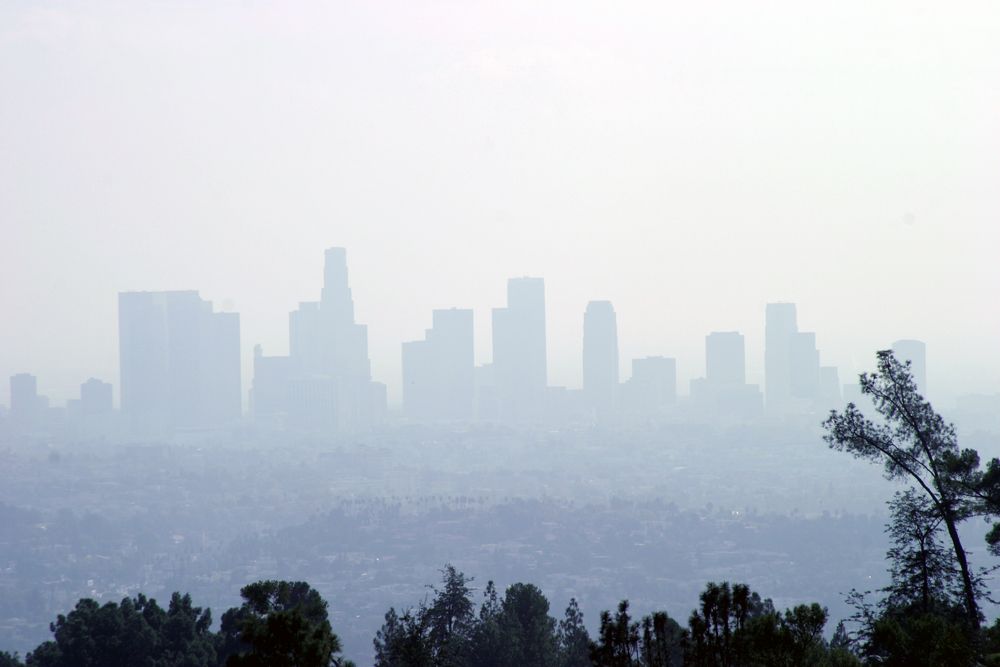Newly Detected Greenhouse Gas Is 7,000 Times More Potent Than CO2

A greenhouse gas that is thought to have a potent impact on global warming was detected in trace amounts in the atmosphere for the first time, according to a new study.
Researchers at the University of Toronto discovered very small amounts of an industrial chemical, known as perfluorotributylamine (PFTBA), in the atmosphere. While only traces of PFTBA were measured, the chemical has a much higher potential to affect climate change on a molecule-by-molecule basis than carbon dioxide (CO2), the most significant greenhouse gas in the atmosphere, and a major contributor to global warming, said study co-author Angela Hong, of the University of Toronto's department of chemistry.
"We look at potency on a per-molecule basis, and what makes this molecule interesting is that, on a per-molecule basis, it's very high, relative to other compounds in the atmosphere," Hong told LiveScience.
Potency measured
This potency is measured as radiative efficiency, which describes how effectively a molecule is at preventing long-wave radiation from escaping back into space. The higher the radiative efficiency, the greater that molecule can influence climate. This value is then multiplied by the greenhouse gas's atmospheric concentration to determine its total climate impact. [The Reality of Climate Change: 10 Myths Busted]
"It takes into consideration where it would exist in the atmosphere, how it absorbs heat, and what else is in the atmosphere," Hong explained. "It's not an intrinsic property; it's a measure of how it would behave in the Earth system."
In these meteorological terms, PFTBA has the highest potential to affect climate of all known chemicals to date, the researchers said.
Sign up for the Live Science daily newsletter now
Get the world’s most fascinating discoveries delivered straight to your inbox.
"Calculated over a 100-year time frame, a single molecule of PFTBA has the equivalent climate impact as 7,100 molecules of CO2," Hong said.
But, it's important to note that the amount of PFTBA in the atmosphere is still far less than global concentrations of carbon dioxide, she added.
"If we had more [PFTBA] in the atmosphere, we'd see more warming," she said. "This is very potent on a per-molecule basis, but there's very little of it in the atmosphere."
Just a pinch of PFTBA
For the study, the researchers collected atmospheric data from November 2012 to December 2012, and measured the proportion of PFTBA in the atmosphere at 0.18 parts per trillion. This means that for every 1 trillion air molecules, less than a full molecule of PFTBA is present. For comparison, the proportion of carbon dioxide in the atmosphere exceeded 400 parts per million earlier this year.
PFTBA has been used in electrical equipment since the mid-1900s. So far, there are no policies in place to regulate its use, particularly within the context of climate change, Hong said.
There are also no known ways to destroy or remove PFTBA from the atmosphere, and the chemical has a very long life span. Molecules of PFTBA could linger in the lower atmosphere for hundreds of years, according to the researchers.
Yet, much is still unknown about the chemical's history, including whether concentrations of PFTBA have changed over time.
"Our measurements are snapshots within the November to December 2012 period, so we can only see how things varied during that time," Hong said. "We don't have any historical measurements, so we can't project backward or forward."
The researchers hope their findings encourage others to study the chemical's behavior, and how it could affect global warming.
"This work is the first measurement ever, but we're not in the monitoring business," Hong said. "It would be really nice if we could get other people to measure and monitor PFTBA."
The study was published online Nov. 27 in the journal Geophysical Research Letters.
Follow Denise Chow on Twitter @denisechow. Follow LiveScience @livescience, Facebook & Google+. Original article on LiveScience.

Denise Chow was the assistant managing editor at Live Science before moving to NBC News as a science reporter, where she focuses on general science and climate change. Before joining the Live Science team in 2013, she spent two years as a staff writer for Space.com, writing about rocket launches and covering NASA's final three space shuttle missions. A Canadian transplant, Denise has a bachelor's degree from the University of Toronto, and a master's degree in journalism from New York University.











